How to Start A Home Daycare in 2024
This post may contain affiliate links which might earn us money. Please read my Disclosure and Privacy policies hereStarting a home daycare in 2024 could be the perfect entrepreneurial venture for those who adore children and want to make a difference in their early years. This post is specifically tailored for newcomers interested in entering the childcare industry.
With an increasing number of working parents and a surge in demand for trustworthy and quality child care, there's never been a better time to start a home daycare business.
We'll walk you through every step of the process, from understanding the market trends and licensing requirements to creating a safe, stimulating environment and developing a robust business plan.
By the end of this guide, you'll be well-equipped with the knowledge and confidence to launch your own successful home daycare.
Let's get started on this rewarding journey!

Home Daycare Business Stats
If you're contemplating starting a home daycare business, understanding the current market trends and statistics can be instrumental in shaping your venture. The U.S. childcare market, valued at $60.4 billion in 2022, is anticipated to grow at a compound annual growth rate (CAGR) of 4.18% from 2023 to 2030. Several factors drive this growth, including the number of working parents and the demand for early childhood education.
Interestingly, about 30% of infants and toddlers attend home-based childcare facilities, indicating a significant market for home daycare businesses. However, it's worth noting that 52% of home-based child care is unpaid – this may be due to informal arrangements with family or friends.
The number of licensed childcare centers has seen an approximate 3% increase between 2021 and 20223, suggesting a growing acceptance and demand for professional childcare services. As for the daycare industry specifically, it is projected to reach a market size of $56.5 billion by 2026, growing at a rate of 1.8%.
Moreover, over 7 million children aged 0-5 receive care in a home-based setting. This underscores the potential for success in starting a home daycare business. But remember, starting a daycare involves more than just a love for children – it also requires compliance with licensing requirements, creating a safe and stimulating environment, and developing a sound business plan.
You might enjoy these posts:
Why Starting a Home Daycare in 2024 is a Great Opportunity
As you can see from the above statistics, a home daycare could be a great business to start. It also has other benefits, such as:
- High Demand: As more parents return to work and seek reliable childcare solutions, the demand for home daycares continues to grow. This presents a lucrative opportunity for aspiring daycare owners.
- Flexibility: Running a home daycare allows you to set your own schedule and choose the number of children you want to care for. This flexibility allows you to balance work and personal commitments effectively.
- Low Startup Costs: Compared to opening a commercial daycare center, starting a home daycare requires minimal investment. You can utilize your existing space and purchase essential supplies and equipment without breaking the bank.
Though starting your business at home has its perks, there are important considerations you should know about.
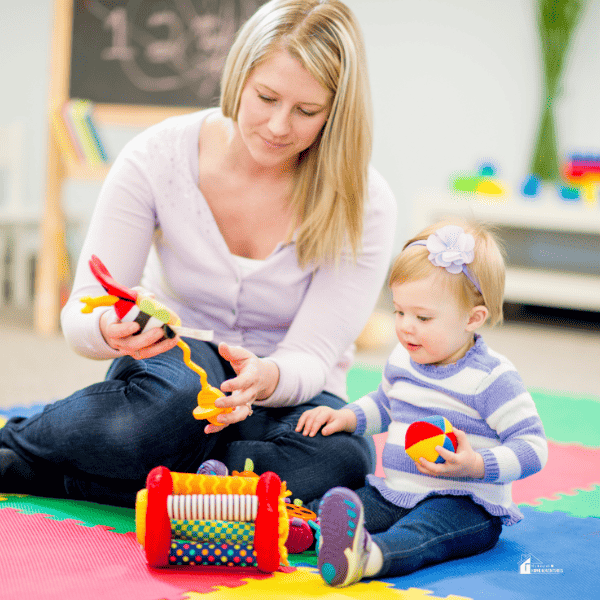
Important Considerations Before Starting a Home Daycare
- Licensing and Regulations: Familiarize yourself with the licensing requirements and regulations imposed by your local government or childcare authority. Ensure that you meet all the necessary criteria to operate legally.
- Safety and Childproofing: Create a safe environment by childproofing your home and implementing safety measures. This includes securing dangerous substances, installing safety gates, and providing age-appropriate toys and equipment.
- Qualifications and Training: Consider obtaining relevant certifications and training in early childhood education or child development. Enhancing your skills and knowledge will benefit the children in your care and build credibility with parents.
Starting a home daycare in 2024 can be a fulfilling and profitable venture. By understanding the opportunities and considering important factors, you can embark on a successful journey in the childcare industry.
Licensing and Legal Requirements
Understanding the Licensing Process for Home Daycare
Starting a home daycare requires adherence to certain licensing and legal requirements. Understanding the licensing process is crucial to ensure compliance and provide a safe and nurturing environment for the children in your care.
To begin, research the specific licensing regulations in your state or country. Each jurisdiction may have different licensing requirements, such as caregiver-to-child ratios, health and safety standards, and background checks for the daycare provider and any adult household members.
Contact your local licensing or childcare resource and referral agency for the necessary information and application forms. Familiarizing yourself with the documentation requirements, fees, and any training or education prerequisites is essential.
Once you have gathered the required documents, submit your application to the appropriate agency. The licensing process typically involves a site visit to ensure your home meets all safety guidelines. Prepare your home by childproofing any potential hazards and ensuring adequate space and equipment for the children's activities and development.
Meeting the Legal Requirements for Operating a Home Daycare
In addition to licensing, operating a home daycare also involves meeting legal requirements to protect yourself, the children, and their families. Here are some key considerations:
- Obtain liability insurance: Protect yourself from potential accidents or incidents by securing liability insurance tailored for home daycare providers.
- Create a contract: Develop a comprehensive contract that outlines the terms and conditions of enrollment, including policies on hours of operation, fees, discipline, and termination.
- Establish health and safety protocols: Implement regular cleaning and sanitizing practices, emergency preparedness plans, and procedures for administering medication and handling illnesses.
- Stay up-to-date with training and certifications: Attend relevant training programs, such as CPR and first aid certifications, to enhance your skills and ensure the children's safety.
- Keep accurate records: Maintain detailed records of attendance, incident reports, health records, and parent communication.
By understanding and fulfilling the licensing and legal requirements for a home daycare in 2024, you can provide children with a nurturing and secure environment while building a successful and compliant business.

Setting Up Your Home Daycare Space
Starting a home daycare can be a rewarding and lucrative venture. If you're considering opening one in 2024, follow these steps to set up a safe and welcoming environment for children.
Creating a Safe and Stimulating Environment for Children
- Childproofing: Ensure all hazardous items like cleaning supplies, sharp objects, and electrical outlets are safely locked away. Install safety gates and secure furniture to prevent accidents.
- Structured Layout: Designate separate areas for play, naptime, meals, and activities. Use bright colors or murals to create an inviting and stimulating atmosphere.
- Age-Appropriate Toys and Materials: Provide a variety of toys, books, and art supplies suitable for different age groups. Regularly rotate toys and keep them clean and sanitized.
Essential Equipment and Supplies for a Home Daycare
- Furniture: Invest in sturdy and child-sized tables, chairs, and shelves. Choose wipeable surfaces for easy cleaning.
- Sleeping Arrangements: Purchase comfortable cribs or cots with appropriate bedding for each child. Ensure each child has his or her dedicated sleeping space.
- Hygiene and Safety: Stock up on essentials like diapers, wipes, hand sanitizers, and first aid kits. Install smoke alarms and fire extinguishers in strategic locations.
- Nutrition and Mealtime: Have a designated area for meal preparation and provide age-appropriate food and utensils. Follow health and safety guidelines when handling and storing food.
Check your local regulations and obtain the necessary licenses or permits before opening your home daycare. Creating a safe, stimulating, and child-friendly environment will ensure your home daycare's success and positively impact the children you care for.
Developing Your Policies and Procedures
Establishing Clear Policies for Parents and Children
When starting a home daycare, it's crucial to establish clear policies for parents and children. These policies create a foundation for your daycare and ensure everyone understands the rules and expectations. Here are a few key steps to consider:
- Enrollment process: Create a clear enrollment process that outlines the necessary paperwork, such as health records and emergency contacts. This process will help you gather vital information and ensure that parents understand your requirements before their child joins your daycare.
- Health and safety guidelines: Develop detailed health and safety guidelines for your daycare. This includes procedures for illness prevention, emergency situations, and child safety. Communicate these guidelines to parents and enforce them consistently to create a secure and healthy environment for the children.
- Behavioral expectations: Communicate your expectations for children's behavior, including discipline methods and rules for interaction with other children and staff members. Setting and enforcing consistent behavioral expectations can create a positive and respectful environment for everyone involved.

Creating Effective Daily Routines and Schedules
Having well-planned daily routines and schedules is crucial when running a home daycare. It helps provide structure, promotes learning, and ensures children are engaged throughout the day. Here's how you can create effective daily routines and schedules:
- Balance of activities: Plan activities that cater to the children's physical, emotional, social, and intellectual development. This includes free play, group activities, outdoor, nap, and structured learning activities.
- Consistency: Stick to a consistent daily schedule as much as possible. Children thrive on routine and knowing what to expect next. Having a predictable schedule helps them feel secure and promotes a sense of stability in your daycare.
- Flexibility: While maintaining consistency is important, it's also crucial to be flexible and responsive to the needs of individual children. Adapt your schedule when necessary to accommodate special activities or events that arise.
Establishing clear policies and creating effective routines and schedules can provide a nurturing and organized environment for the children in your home daycare. These steps will help ensure the well-being and development of the children while giving parents peace of mind.
Attracting and Retaining Clients
Marketing Strategies to Promote Your Home Daycare
Starting a home daycare in 2024 requires effective marketing strategies to attract and retain clients. Here are some tips to help you promote your home daycare effectively:
- Online Presence: Create a professional website and social media pages for your home daycare. Share engaging content, such as videos showcasing the daily activities and learning experiences of the children in your care. You can easily enhance these videos with an online video editor to add a personal touch and make them more appealing to parents. Additionally, post pictures of happy children, and highlight the unique features of your daycare through visually appealing graphics and videos. Utilize targeted advertising on social media platforms to reach potential clients in your area, and consider creating informative video advertisements using an online video editor to effectively convey your daycare's strengths and values to your audience.
- Word-of-Mouth: Encourage satisfied parents to refer your daycare to their friends, family, and neighbors. Offer incentives, such as discounted rates or referral bonuses, to encourage referrals.
- Local Partnerships: Build relationships with local schools, pediatricians, and community organizations. Offer educational workshops and parenting resources, or collaborate on community events. This will help you establish credibility and gain exposure within the local community.
Building Strong Relationships with Parents and Children
To ensure your home daycare's success, building strong relationships with parents and children is essential. Here are some tips on how to do that:
- Open Communication: Maintain open and transparent communication with parents. Regularly update them about their child's activities, development, and any concerns. Provide a platform for parents to provide feedback and address any issues promptly.
- Personalized Care: Treat each child as an individual and tailor your caregiving approach to their specific needs and interests. This will demonstrate your dedication and create a positive and nurturing environment for children and their parents.
- Engaging Activities: Plan engaging and age-appropriate activities to keep children stimulated and excited about coming to your daycare. Offer a variety of activities, including arts and crafts, outdoor play, and educational games, to cater to different interests and developmental stages.
Starting a home daycare requires dedication, professionalism, and a genuine love for childcare. You can attract and retain clients by implementing effective marketing strategies and building strong relationships, allowing your home daycare to thrive in 2024 and beyond.
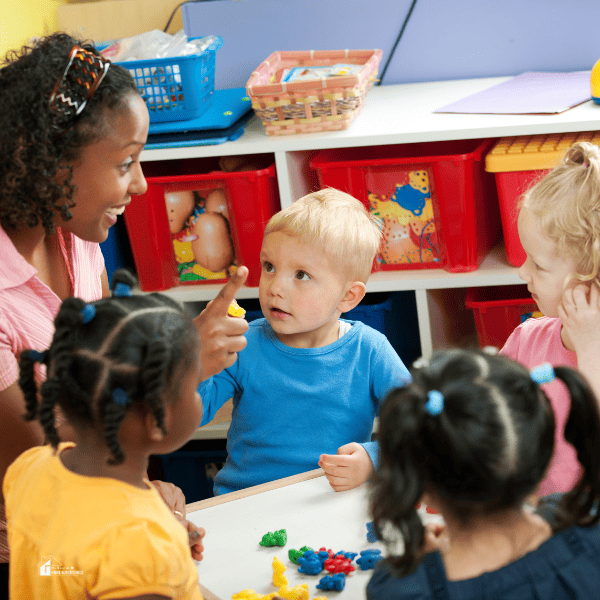
Hiring and Managing Staff (if applicable)
A home daycare can be a rewarding and profitable venture. However, as your business grows, you may need to consider hiring and managing staff to help maintain a high standard of care. Here are some key points to consider when it comes to staffing your home daycare.
Determining Staffing Needs for Your Home Daycare
Before hiring staff for your home daycare, it's important to determine your staffing needs. Consider the number of children you plan to care for, the age groups you will accommodate, and the hours of operation. Once you clearly understand your needs, you can define the roles and responsibilities you expect your staff members to fulfill.
Effective Hiring and Management Practices
When it comes to hiring and managing staff for your home daycare, here are some best practices to consider:
- Job Descriptions: Clearly define each staff member's role and responsibilities to ensure everyone knows their duties.
- Screening and Background Checks: Conduct thorough screenings and background checks on potential staff members to ensure the safety and well-being of the children in your care.
- Training and Certification: Provide appropriate training to staff members to ensure they have the necessary skills and knowledge to provide quality care.
- Effective Communication: Establish open lines of communication with your staff to ensure a collaborative and supportive work environment.
- Regular Evaluations: Conduct regular performance evaluations to provide feedback and identify areas for improvement.
- Continuous Professional Development: Encourage staff members to participate in ongoing professional development opportunities to enhance their skills and keep up-to-date with industry regulations and best practices.
By carefully considering your staffing needs and implementing effective hiring and management practices, you can ensure that your home daycare continues to provide a safe and nurturing environment for children in 2024 and beyond.
Managing Finances and Budgeting
Running a successful home daycare requires more than just providing a safe and nurturing environment for children. It also involves effectively managing your finances and budgeting to ensure profitability and sustainability.
Creating a Financial Plan for Your Home Daycare
Before starting a home daycare, it's essential to create a comprehensive financial plan. This plan will help you determine the costs involved in setting up and operating your business. Consider expenses such as licensing fees, insurance, equipment, supplies, marketing, and staff wages, if applicable.
Additionally, establish your pricing structure by researching local rates and analyzing your expenses. This will ensure that you set competitive prices while covering your costs and generating a profit. Remember to factor in additional expenses like food, transportation, and educational materials.

Tracking Expenses and Ensuring Profitability
It's crucial to track your expenses closely to manage your finances effectively. Keep detailed records of all your income and expenses, including receipts and invoices. This will help you monitor your cash flow, identify any unnecessary expenses, and make informed financial decisions.
Regularly review your financial statements and assess your profitability. If necessary, adjust your pricing, reduce expenses, or explore additional income streams to ensure that your home daycare remains financially viable.
Consider seeking professional assistance from an accountant or financial advisor who can provide guidance on managing your finances, optimizing tax deductions, and ensuring compliance with applicable regulations.
By staying organized, monitoring your expenses, and making sound financial decisions, you can establish a solid foundation for your home daycare business and position yourself for long-term success.
Health and Safety Measures
Take responsibility for the health and safety of the children under your care. As a caregiver, it's crucial to implement proper health and safety guidelines to ensure a secure environment for the children and peace of mind for their parents.
Implementing Health and Safety Guidelines for Your Home Daycare
- Clean and Sanitize: Regularly clean and sanitize all areas where children play and eat. Use child-safe cleaning products and follow recommended guidelines for disinfection.
- Childproofing: Ensure that your home is childproofed. Install safety gates, secure loose cords, lock away hazardous substances, cover electrical outlets, and use corner guards on furniture to prevent accidents.
- Healthy Environment: Promote good hygiene practices. Teach children to wash their hands regularly, cover their mouths when sneezing or coughing, and dispose of tissues properly.
- Safe Outdoor Space: If you have an outdoor play area, ensure it is safe and secure. Regularly inspect structures, maintain a soft landing surface, and install appropriate fencing to prevent children from wandering off.
Dealing with Emergencies and First Aid Procedures
- First Aid Training: Obtain proper first aid and CPR certification. Knowing how to respond during emergencies can save lives.
- Emergency Supplies: Keep a well-stocked first aid kit, fire extinguisher, and emergency contact numbers readily available in case of an emergency.
- Emergency Evacuation Plan: Develop and practice an emergency evacuation plan with the children and your staff. Ensure everyone knows how to exit the premises quickly and safely.
- Communication with Parents: Keep parents informed about any health and safety incidents that occur during daycare hours. Maintain open lines of communication and promptly address any concerns.
By following these health and safety measures, you can create a secure and nurturing environment for the children in your home daycare. Building trust with parents and ensuring the well-being of the children will help your business thrive in 2024 and beyond.

Continuous Professional Development
Starting a home daycare in 2024 requires more than just a love for children and a nurturing personality. It also requires continuous professional development to stay updated with best practices and industry trends. This ensures the safety and well-being of the children in your care and helps you provide high-quality childcare services that meet the evolving needs of families in your community.
Staying Updated with Best Practices and Industry Trends
The field of childcare is constantly evolving, and it is crucial for home daycare providers to stay updated with the latest best practices and industry trends. This includes staying informed about new regulations and licensing requirements, as well as advancements in early childhood education and development. It is important to regularly attend workshops, seminars, and conferences related to childcare to gain new knowledge and skills and to network with other professionals in the field.
Also, staying connected with professional organizations and online communities can provide valuable resources and support for continuous learning and growth.
Opportunities for Training and Professional Growth
Investing in training and professional growth is a key aspect of continuous professional development for home daycare providers. Various opportunities are available to enhance your skills and knowledge, such as obtaining certifications in early childhood education, first aid and CPR, and child development.
Also, pursuing higher education in the field, such as a degree or specialized courses, can open up new career opportunities and increase your credibility as a childcare professional. Taking advantage of mentoring programs or joining professional associations can also provide valuable guidance and support as you navigate your career in home daycare.
By prioritizing continuous professional development, home daycare providers can stay ahead, provide exceptional care to children, and build a successful and respected business in 2024 and beyond.
Starting and running a home daycare can be a rewarding and fulfilling venture for those passionate about working with children. By following the necessary steps and guidelines, you can create a safe and nurturing environment for the children in your care while also building a successful business.
Celebrating a Successful Home Daycare
Starting a home daycare in 2024 requires careful planning, preparation, and compliance with local regulations. Following the key steps outlined in this article can lay a solid foundation for your daycare business. Each step is crucial to your success, from conducting market research and obtaining the necessary licenses to creating a safe and engaging environment for the children. Once you have set up your home daycare, you can take pride in providing quality care and positively impacting the lives of the children and their families.
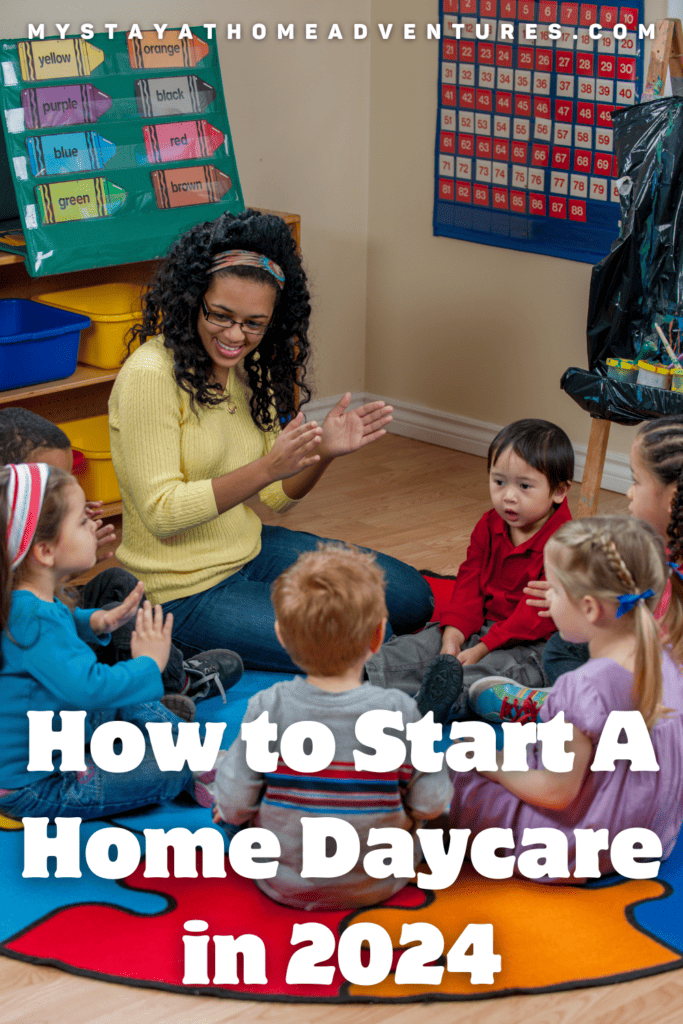
Additional Resources for Further Assistance
If you are considering starting a home daycare and would like more information and guidance, there are several resources available that can provide valuable assistance:
- Contact your local government or licensing agencies: These organizations can provide specific guidelines and requirements for operating a home daycare in your area.
- Join professional associations: Organizations such as the National Association for Family Child Care (NAFCC) and the National Association of Child Care Resource & Referral Agencies (NACCRRA) offer support, resources, and training opportunities for home daycare providers.
- Attend workshops and training programs: Look for local workshops or online courses focusing on child development, safety regulations, and business management for home daycare providers.
Starting and running a home daycare requires dedication, hard work, and a passion for working with children. With the right preparation and ongoing commitment, you can create a successful and fulfilling business providing quality care to your community's young children.

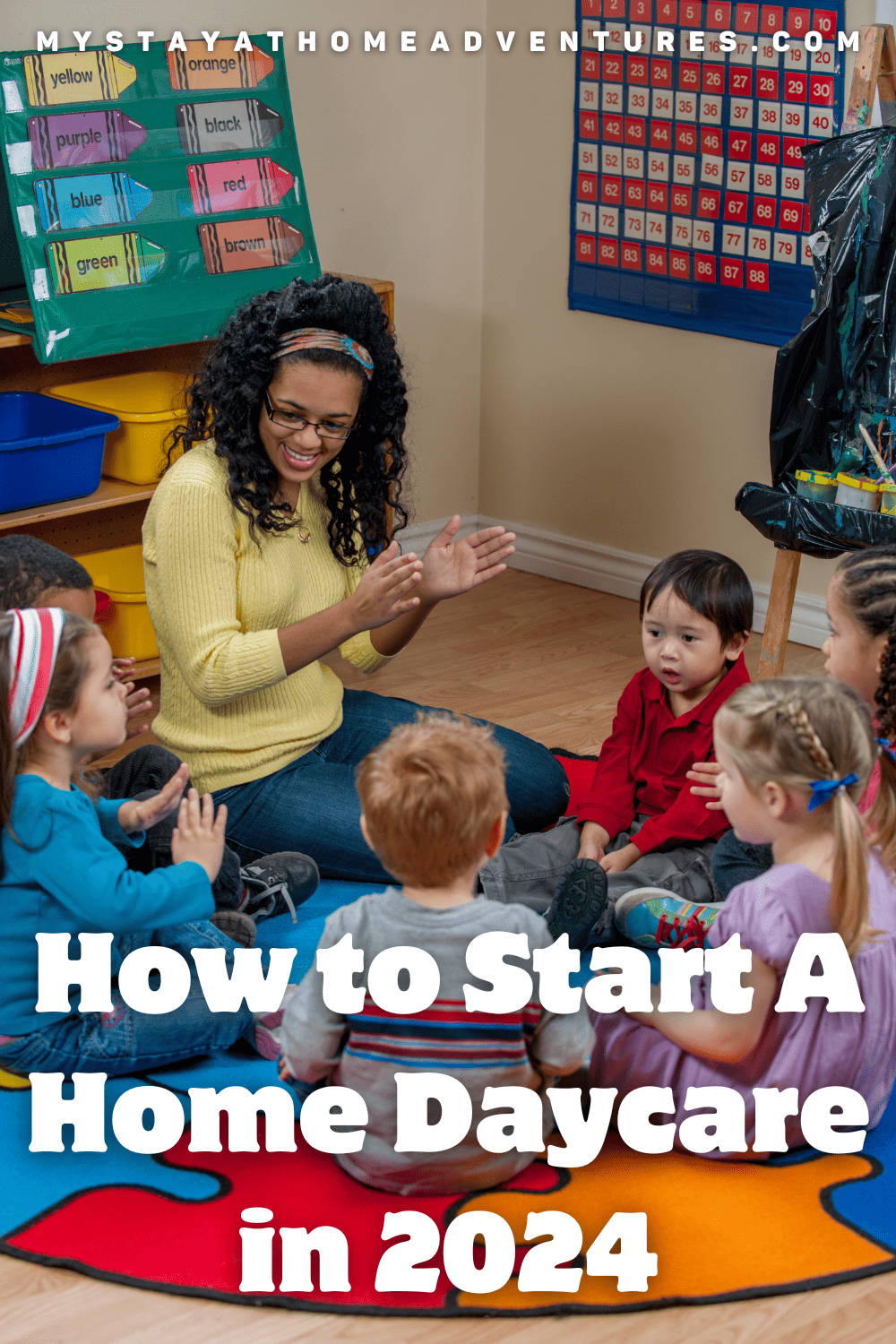
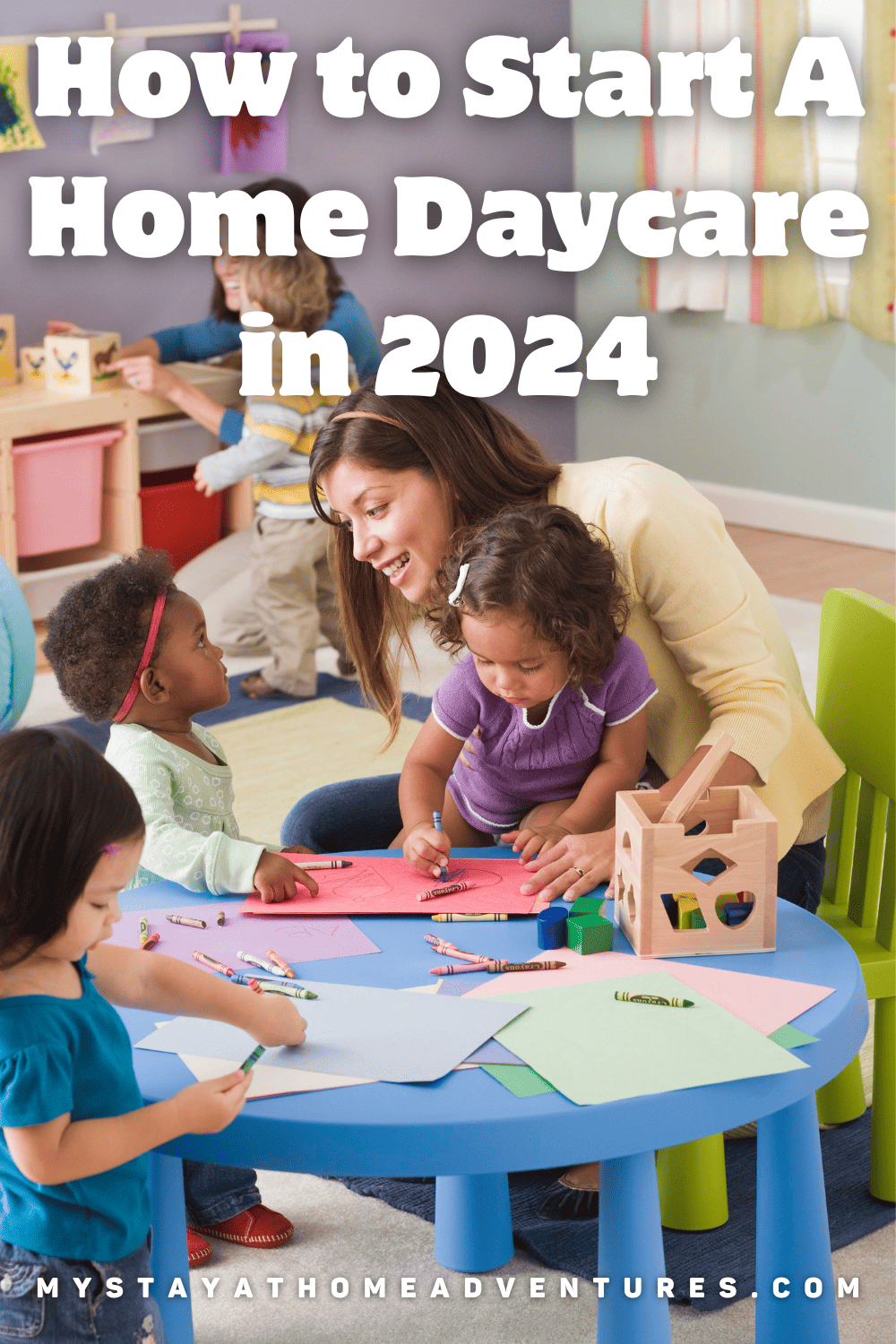



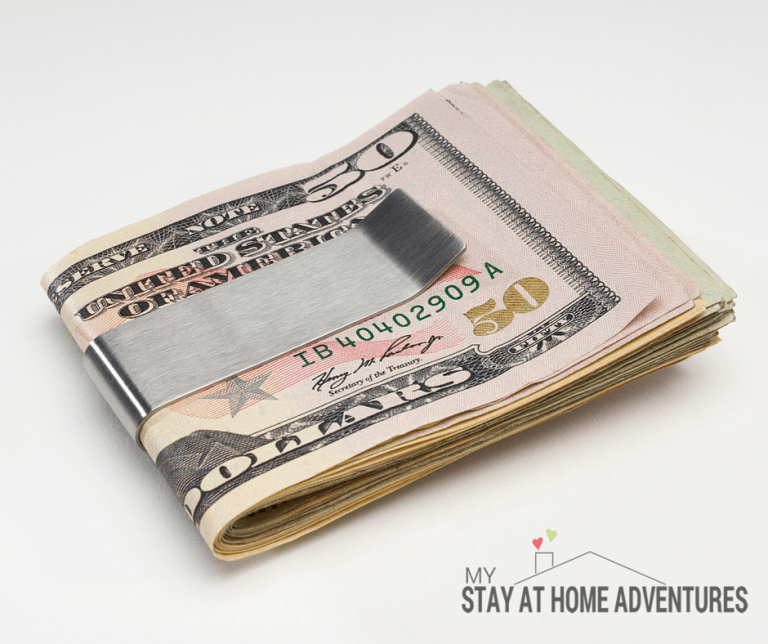

My husband and I have been discussing our plans after I give birth. I think that I might wait a few years and put my daughter in child care so I could go back to back to my career. Thanks for adding as well that you might need the proper equipment such as crib and payment.